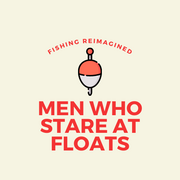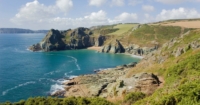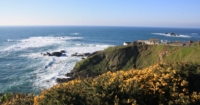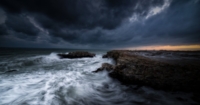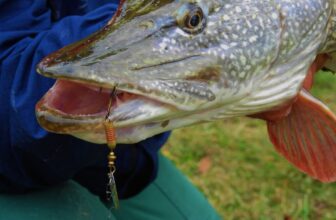In our opinion, bass fishing is the creme de la creme of angling in the UK. Bass are aggressive, challenging and – best of all – bass ‘hang out’ in the most fascinating landscapes. Devon’s Jurassic Coast, Ireland’s Southwest Coast and Norfolk’s beach system are some of our favourite marks for bass fishing.
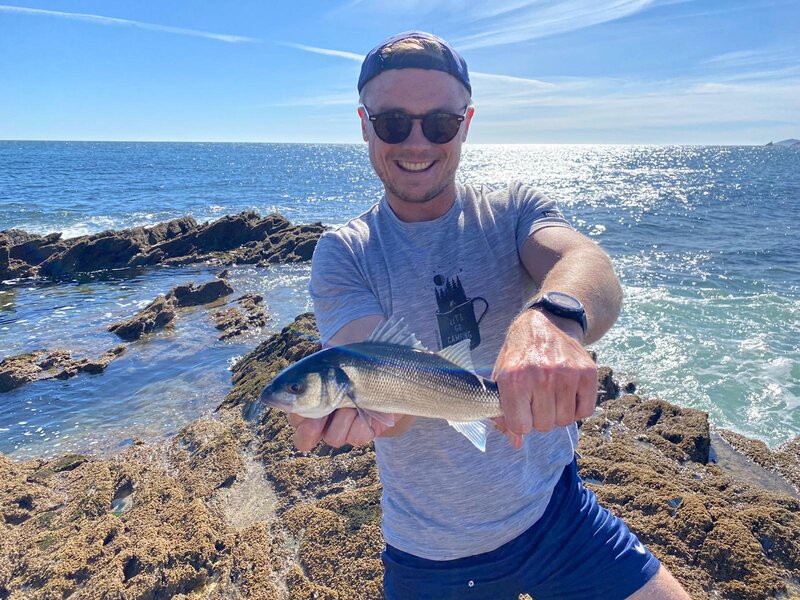
If you’re looking to start sea bass fishing, it can be tricky. Years ago I learnt a lot of the basics from a good friend (who fortunately also had enough gear for two) and became obsessed with lure fishing for these angry little devils.
Fishing is all about your surroundings. The rugged coastlines, jagged rocks, swells and dappled sunlight make you forget about everything else. You’re just there in the moment. And for that bass fishing can’t be beaten. In the UK at least. Don’t be surprised if you cover 20 to 30,000 steps in a day of bass fishing. It’s good for the heart and soul in more ways than one.
The 12 Best Sea Fishing Spots in Devon
Can you catch bass in the UK?
Yes, you can catch bass in the UK, but specifically European bass; not Large or Smallmouth bass like our American cousins. European Bass are a slow-growing species (of sea bass) that take years to reach full adulthood.
Whilst these fish look remarkably similar and are as aggressive as each other – which makes the fishing sublime – Largies and Smallies are freshwater fish whereas European Bass are, amazingly, saltwater fish.
British bass are more commonly associated with the warmer waters on the south coast of England and Ireland in areas where there are waves for the bass to hunt. The fish are typically between 1 – 3lb (schoolies) but have been known to reach 20lb+. The British record from shore is a remarkable 19lb 12oz caught around Portsmouth Docks in 2012 – caught by YouTube’s The Fish Locker.
Bass Fishing Limits in the UK
- If you’re looking to keep the fish it must be a minimum of 42cm / 16.5 inches in length
- Between 1st March – 30th November not more than two seabass may be retained per fisherman per day
- January, February and December are catch-and-release-only months
Since bass numbers hit a 20-year low in the UK in 2013, more stringent measures were put in place to ensure the survival of the species. The minimum landing size was increased from 36 – 42cm and anglers were only allowed to keep a maximum of three per day.
Since then there have been additional, even more, stringent key regulations to follow when bass fishing:
You can find out more in our guide to bass fishing rules and regulations in the UK.
What do I need to start fishing for bass?
One of my favourite things about bass fishing – particularly bass fishing with lures – is the setup. Covering ground is key when bass fishing from the shore, so a simple setup is perfect.
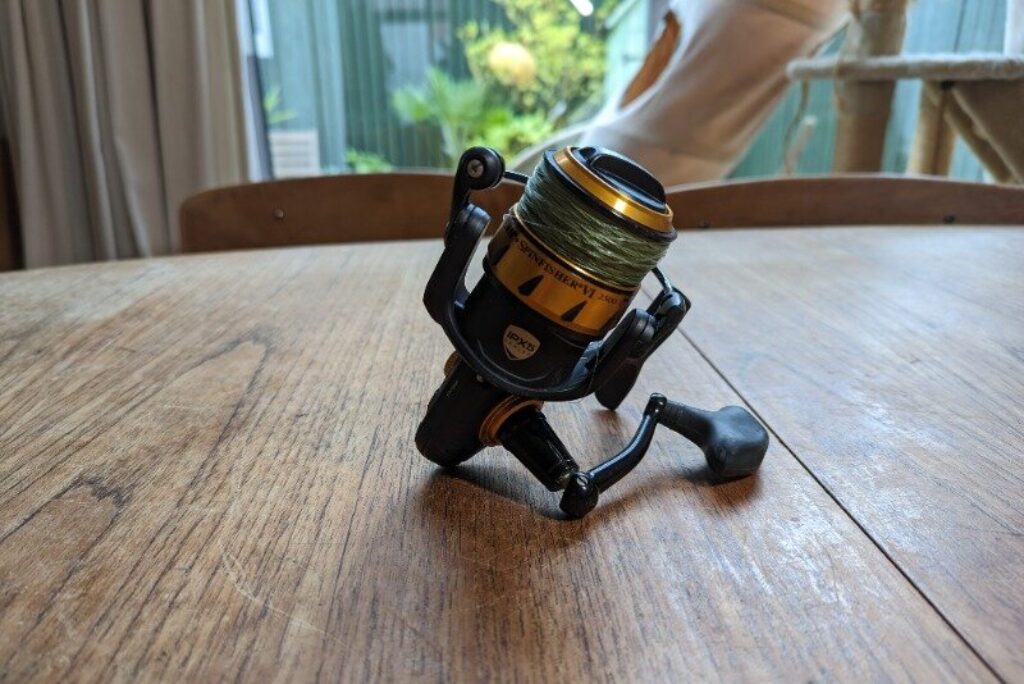
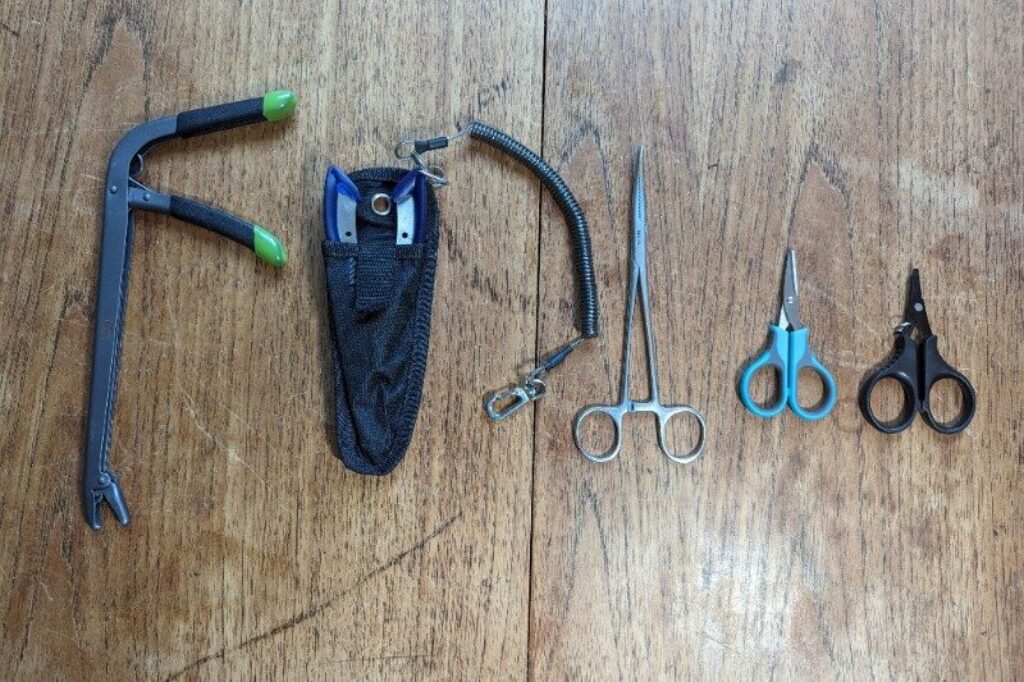
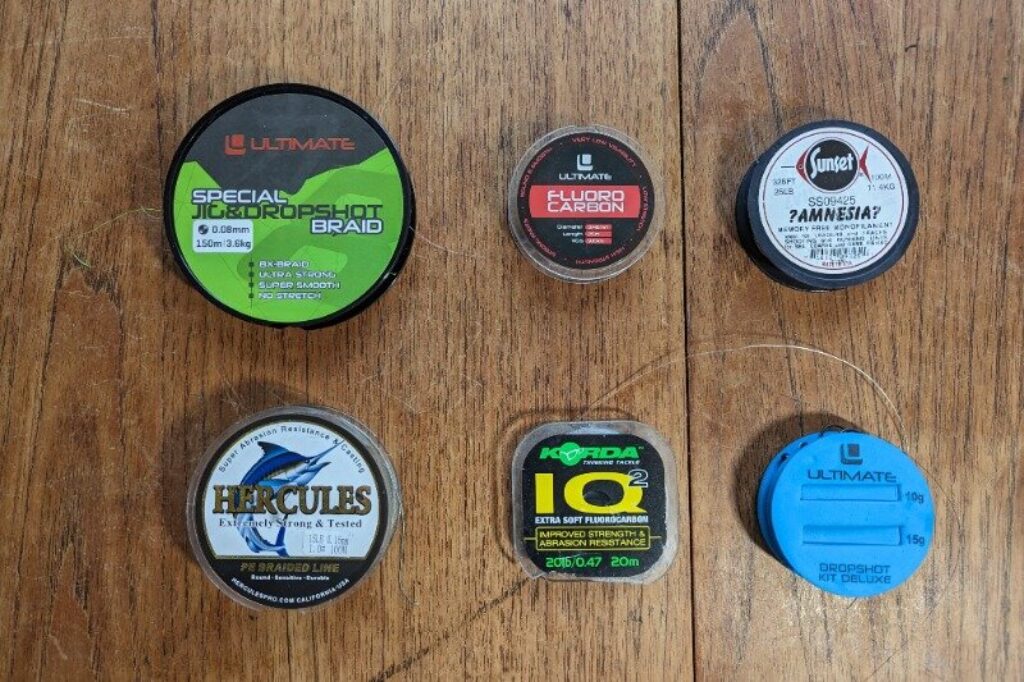
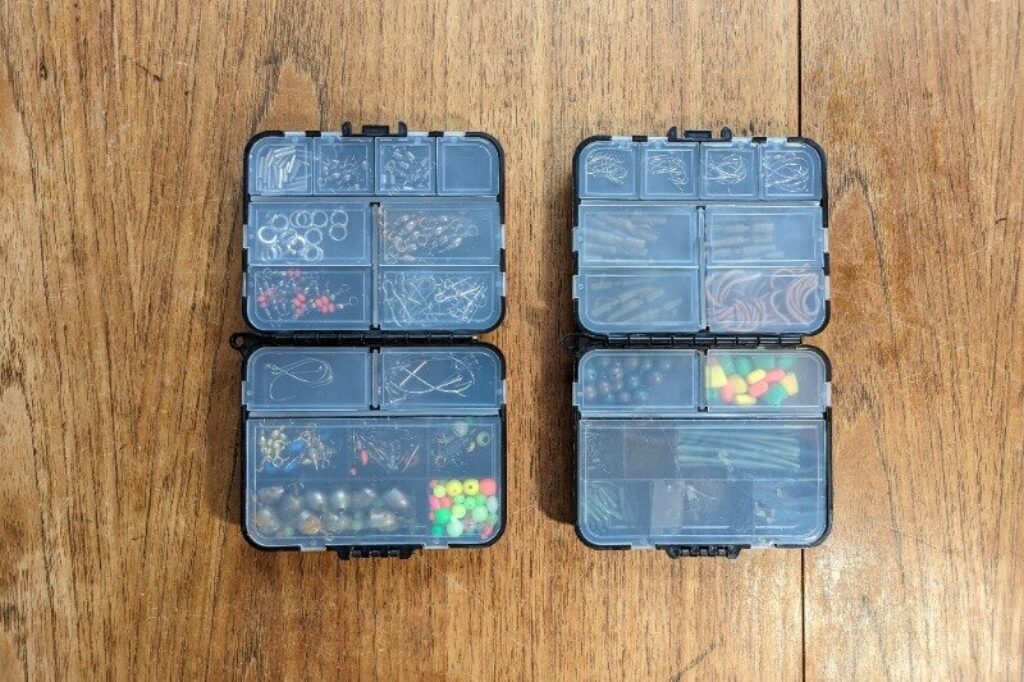
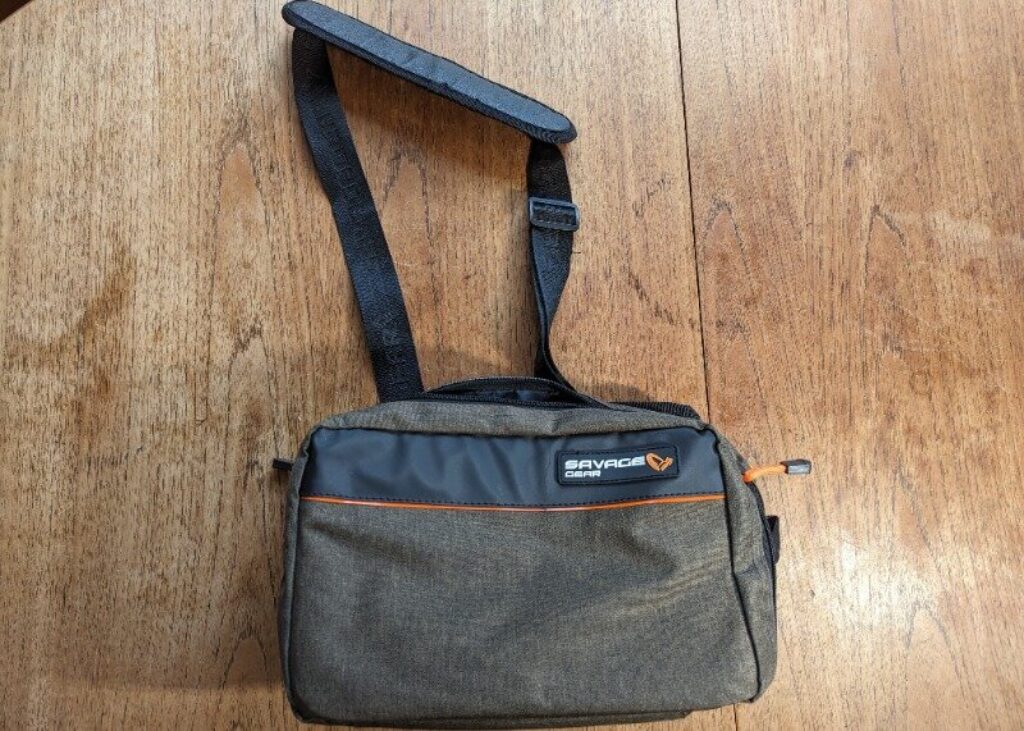
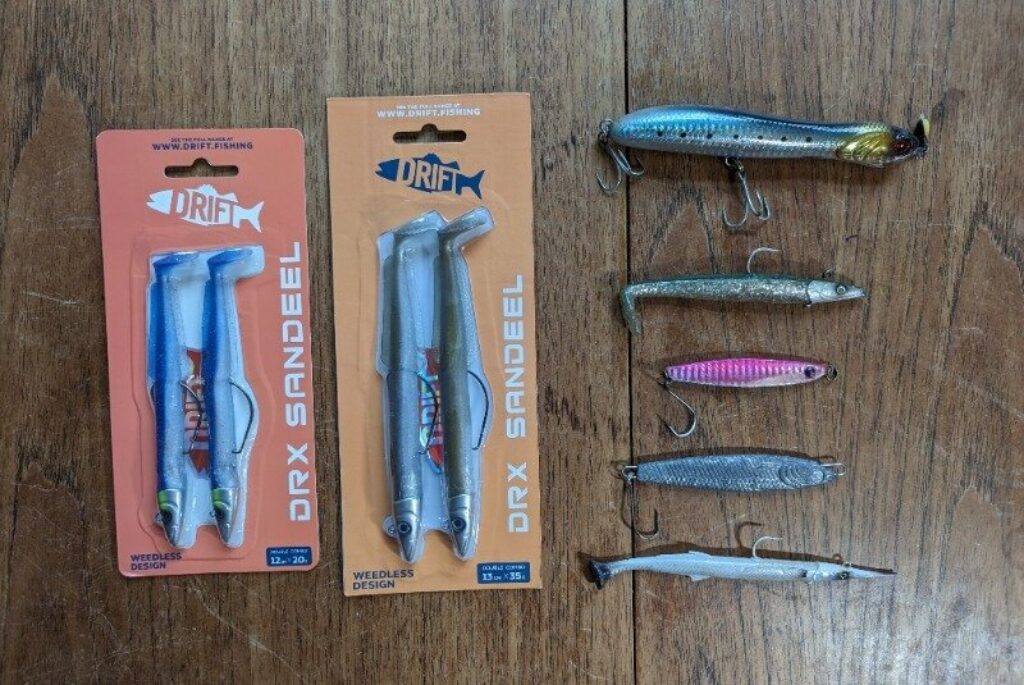
If you’re lure fishing for bass, you’ll need:
If you’re fishing from the shore, typically a two-piece, an 8’6″ – 10′ rod with good flexion (for casting range), a supple tip and a casting weight of up to around 50g, is perfect for targeting bass with lures. You can find information about the best bass fishing rods in the UK and the best bass fishing lures here.
Bass fishing is typically best suited to ultra-smooth saltwater spinning reels that let you cover some serious distance and work well when the conditions get tough.
- Line: 20lb braid is a good choice for any starting shore fisherman
- Leader: You’ll need a high-quality fluorocarbon leader with a breaking strain of just slightly less than the line you use. We typically use 18lb or 20lb line.
- Lures: Take a variety of heavier lures that allow you to cover the distance, weedless lures for snaggy fishing, paddle tails for some serious wiggle and a mixture of colours to support fishing in any conditions
- Splitters and Lure Clips: Bass fishing can be snaggy and frustrating at times. But setting up with splitters and lure clips allows for quick tackle changes and fewer complete tackle resets when you lose your lure in a snag
- Tackle Bag: Take a bag with you where you can carry spare line, leader, lures and rigs – set them up prior and thank us later – conveniently
- Bait: If you’re bait fishing from the shore, bass love squid, mackerel, crabs, and prawns – live or dead. You’d then also need hooks and weights to let you cover the required distance and for stability purposes
- Sunglasses: Polarised lenses are a fishing essential. Particularly in sunny, swelly conditions.
- Waders or fishing boots: Again you don’t need the best waders or the best fishing boots, particularly if you’re fishing from a boat or from the shore in deeper water – but they are an incredibly useful piece of kit to have
- Hat
- Grippy shoes: Bass fishing from the shore requires some mild athleticism when it comes to clambering around slimy rocks. So some good shoes are essential. Depending on the sliminess of the rocks, supple plimsolls (when it’s dry) or some proper neoprene beach shoes
This post on saltwater lure fishing in the UK provides some more general advice on sea fishing with lures.
Where is the best bass fishing in the UK and Ireland?
European bass love warmer waters, so they’re predominantly found on the south coasts of England and Ireland all year round. However, the global sea temperature rise means all fish – including bass – are becoming more common in otherwise unchartered waters for the species in question.
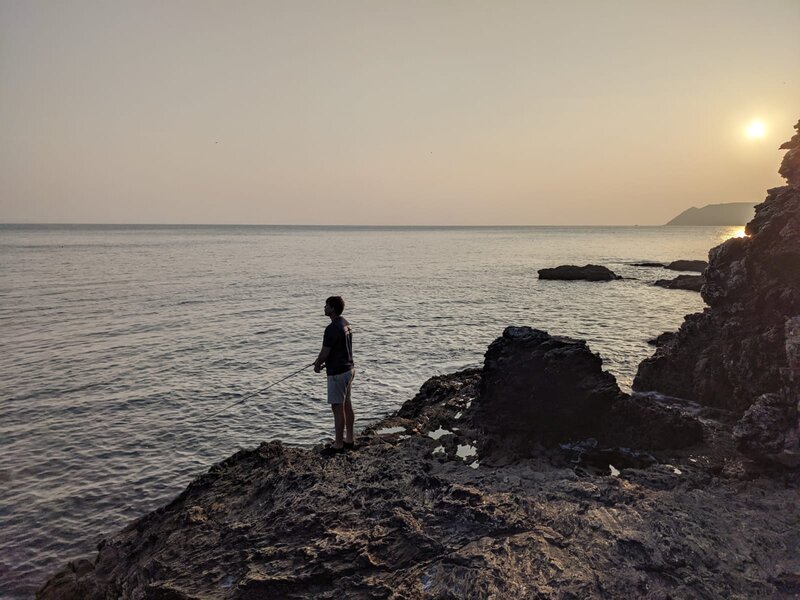
Bass around the North East coast of the UK and the Yorkshire coastline is no longer a rare sight. Although this is still largely a summer month venture.
Our favourite bass fishing locations in the UK are:
- The South Devon Coast
- Cornwall’s entire coastline
- Southwest Ireland’s entire coastline
- Norfolk’s coast
- Dorset’s coast
- Pembrokeshire’s coastline
Having never fished further north for bass, our go-to marks tend to be rockier, more isolated fishing spots where the fish are harder to find, but in stunning backdrops. Southern Ireland, Cornwall and Devon can be fished almost year-round such is the more temperate nature of the sea.
The 11 Best Spots to Sea Fish in Cornwall
There are other excellent marks, particularly on the south coast including; Brighton, Portsmouth Harbour and Chichester and the rest of East Anglia. But the trip itself isn’t quite as spectacular. See out top bass fishing tips to minimise your chances of blanking.
It’s also worth looking into estuaries in the area. From early spring until mid-summer bass are drawn closer to the shore primarily due to the abundance of peeler crabs. Once the shell-less crab starts to show – alongside the rest of the bait fish like sandeels, sea trout and flatfish – bass will come into estuaries in the area.
Whilst estuaries are more famed for schoolies (smaller schools of bass) rougher conditions, gales and storms will bring in monster bass. They can even tolerate brackish and freshwater conditions for a period.
When night falls and the tide starts to push, the Bass move up from the mouth of the estuary, using the flood tide to help them travel miles upriver in some cases. You can fish the ebb tide as bass escape the estuary on the preferable tide, but they’re cautious of being cut off so hug the edges and escape quickly.
What time of year is best for bass fishing in the UK?
Generally, the summer months are better for bass fishing. Both for the fish and your own sanity. May – September is prime bass fishing on the south coast particularly. In the North Sea regions, June – August are the months with the best chance of success. The season tends to start in April as Peeler crab numbers increase and bait is on the rise.
Peeler Crabs are not a specific species of crab but refer to the peeling process crabs go through before they shed their old shell and – prior to the hardening of the new shell – become excellent bait.
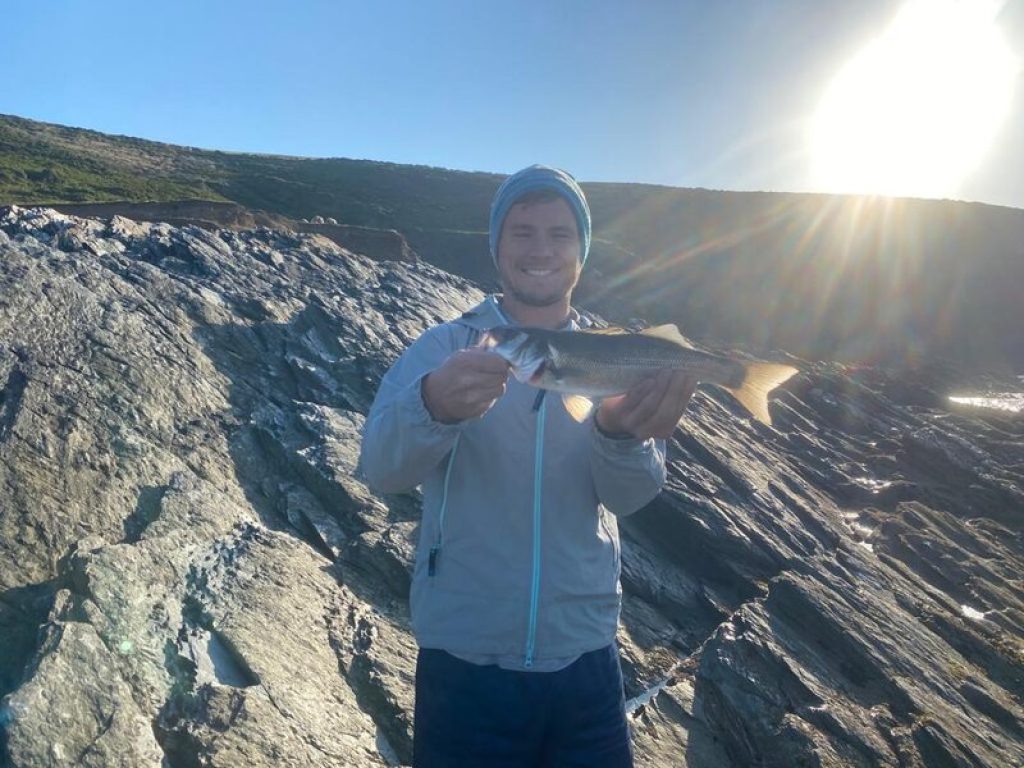
What are the best conditions for Bass fishing?
Bass are ultra-aggressive fish who – in some cases – literally ram their prey headfirst in order to stun them. So it makes sense that these ambush predators prefer to hunt in conditions that allow them a little subtlety. The best conditions for bass fishing tend to be:
- Lower light around dawn or dusk
- Two hours on either side of the ebb and flood tide
- An area with structure and/or rocky ground to lay in wait
- Waves or swell – so they can hide and hunt in the white water
- In areas where prey is fruitful – particularly Peeler Crab and Squid
- Warmer waters; in the UK the season tends to run between April – September
When is the best time to fish for European Bass?
Your best chance of catching bass is when light conditions are low – dawn or dusk are personal favourites, but nighttime tends to throw up monsters – around two hours on either side of the ebb and flood tide (although conditions like water depth and colour do make this vary) in shallower water.
This is not to say you can’t catch bass when the sun is out or the weather is calm. But it’s significantly less likely, particularly on shallow beaches. If the water is much deeper with s steep shingle bank, you’ll stand a chance of some daylight bass.
What Is The Best Weather For Fishing?
What tide is best for Bass fishing?
Ask any mildly serious Bass fisherman and they’ll tell you to fish the waters around high and low tide. Two hours on either side of the ebb and flood tides (that occur roughly twice daily in coastal areas) tend to create the best conditions for Bass fishing. Whilst you can find areas to fish well at all tidal states – try this post on the best conditions for bass fishing in the UK – we’d suggest starting with the high and low tide in mind.
Fishing at peak high and low tides tends to be incredibly unproductive. Predatory fish like Bass prefer white water and swell to hunt in. So the peak tidal times tend to be a good time to either take a break or pack up until the next cycle returns.
If you’ve arrived at a mark at peak low tide it can be a great opportunity to check the area out for likely marks. You can find the tidal times for your location(s) here.
It’s important to note that different marks fish best at different tides and times. Shallow, rocky marks are more likely to fish best as the tide is going out (on the ebb). Possibly because bass know their prey has to clear out, so wait for the inevitable exodus. Deeper beaches tend to fish well as the tide starts to come in and on either side of the flood.
And the time of day matters. Lower light and rougher conditions create the perfect environment for bass to hunt. Midday in the beating sun at high or low tide is enough for even the most ardent bass fisherman to call it a day.
Why does the tide matter for bass fishing?
Sea bass are aggressive ambush predators. They love to hide behind or in structures and white water swells, which makes the tide a key factor in the quality of your bass fishing mark. So as it comes in and out – particularly over shallower waters – the volume of water and wash means bass can hunt more effectively. Hence fishing the period on either side of high and low tide is most bass angler’s preference.
FAQs
Can I keep bass I catch?
Recreational fishermen in the UK can keep Bass that are over 42cm in length to protect fish stocks in European waters. And between 1st March – 30th November only two Bass can be kept per day.
What size bass can you keep in the UK?
As a recreational fisherman, you can keep bass that are above 42cm in length – that’s 16.5 inches. Although catch and release for Bass is our preferred fishing method for UK waters to ensure bountiful stocks.
Can you catch bass in the winter in the UK?
You can catch Bass in the winter in the UK. It’s definitely more of a challenge as Bass are generally warmer water fish. But they are present year-round on England’s southern coastline – predominantly Cornwall, Devon and Dorset – and the southwest coast of Ireland. But sea fishing in winter from the shore can be pretty treacherous.
Are bass protected in the UK?
Bass are not a protected species in the UK, but there are rules and regulations about the size you can keep (42cm +), the time of year you’re allowed to keep Bass (March – November) and how many you can keep. Which for recreational fishermen is two per day. This is because Bass are a slow-growing species that take years to reach maturation, so protecting fish stocks is vital.
What time of day is best to fish for bass in the UK?
This does depend on the time the tide reaches the low and high marks in the area you’re in. A good rule of thumb is to aim for around two hours on either side of the ebb and flood, as Bass like to hunt in faster-flowing white water around rocks and structures.
And generally darker periods – dawn and dusk being personal favourites – are best suited to Bass fishing. The fish appear more confident when the sun doesn’t shine so brightly and the water appears a little murkier.
How deep should you fish for sea bass?
Bass are interesting fish because they hunt in both shallow and deep water. Bass will hunt for crabs, shrimp and sandeels in remarkably shallow water within 10 – 20 feet of the shore in many cases. It really depends on the conditions, time of year and prevalence of bait fish in the area.
Equally Bass are comfortable hunting in water with a depth of 10 – 20 feet. If you’re lure fishing from the shore gullies between rocks and in the depth are excellent spots to trial. If you’re float fishing for bass at night, try fishing at different depths. If there’s no tip action in six feet deep water, recast further out.
Tags: BassSea Fishing
Harry
Hi, I'm Harry. A keen, albeit exceedingly average fisherman. I've spent the last few years trawling London's waterways with - if I'm being kind - varied success and would love to help you avoid the mistakes I have made.
